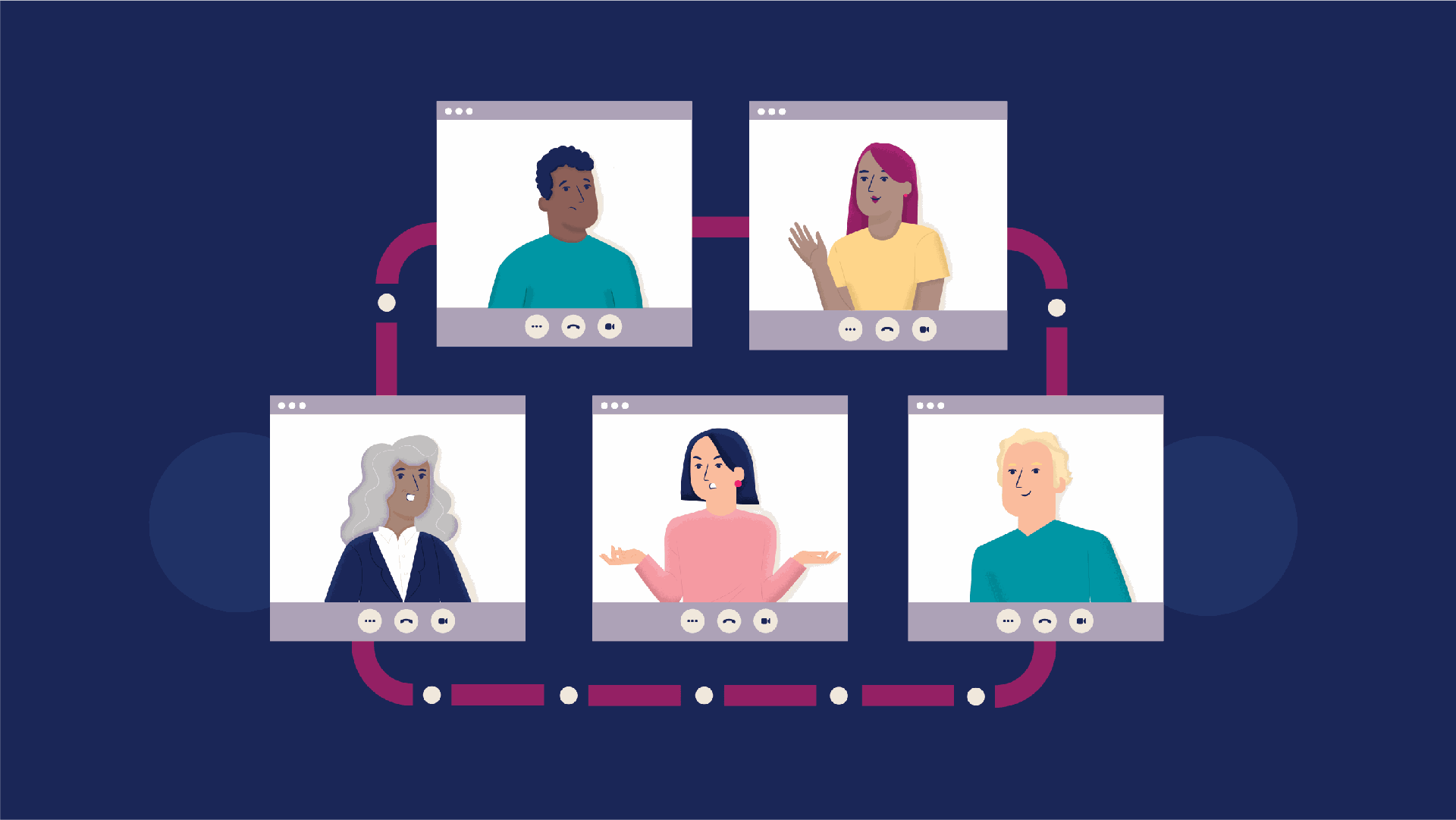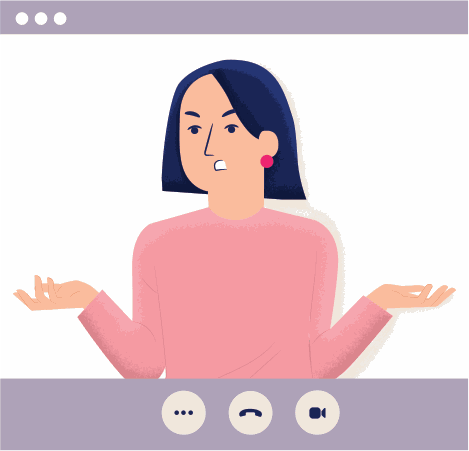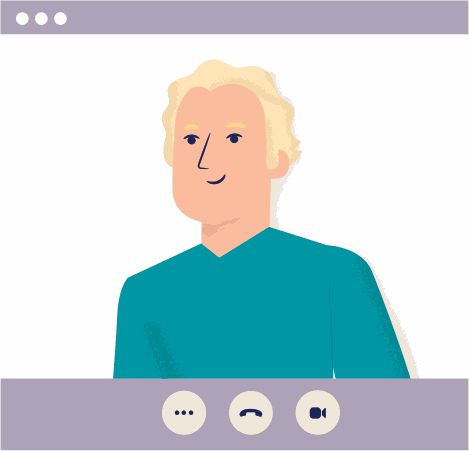
The fact is, while it’s easy to connect with some customers, some personality types just don’t match with yours. But running a business isn’t like casually dating—you can’t ghost customers who call you just because you don’t click with them. If you could somehow magically swipe left on all those callers, you might have a great time answering your phone, but you’d lose out on a lot of great opportunities for your business.
Here’s the good news: with a bit of effort, you can turn difficult calls into good conversations.
At Ruby, we’re always looking for the chance to provide wow-worthy customer service. So we’ve put together an overview of a few types of callers you might encounter, and how to connect with them effectively.
Tips for connecting with 5 types of callers
Type 1: the talker
We all know this one, right? The talker can be the toughest type of caller because it doesn’t feel like they respect your time—often, your most valuable asset. You have other things on your to-do list, but the talker needs to be heard. While this person’s tone might actually be pleasant, they can drain your energy.
The strategy: don’t be afraid to cut in and assert boundaries—but do it kindly. There is such a thing as a polite and strategic interruption that helps you return to the point of the conversation.
Try this phrase, for instance:
“Sorry, can we pause for a moment? I’d like to return to something you said.”

Use the interruption as an opportunity to address the part of the call that’s actually relevant to your business, and drive the rest of the call from there.
If it gets to a point where you need to end the phone call, try a solid wrap-up phrase that establish rapport with the caller and provide concrete next steps.
Type 2: the intimidator

This person is accustomed to having the upper hand in their relationships and conversations. They think bossing you around will get them what they want, whether it’s a deal, a freebie, or something else. The intimidator’s key behavior is trying to convince you that they know your business more than you do.
The strategy: identify the customer for who they are (to yourself), remain calm, and hold your ground.
On a call like this, you are your own best advocate. When a caller displays bullying behavior, give yourself an internal pep talk:
“Ok, we’ve got an intimidator here. Let’s turn this around.”
Then, practice active listening, but be firm:
“Thank you for expressing your thoughts about [issue, product, service, etc.]. I hear your frustration.”
Where does the “firm” part come in? Be clear about what you can and can’t do for them. Honesty cultivates respect, and if it doesn’t, you can walk away from the conversation knowing you held your ground:
“I can’t offer you a discount on [service, product] but I’d love to send my best technician out to you by the end of today. If that sounds good to you, we can schedule a time right now.”
Type 3: the venter
The venter has something to complain about that specifically relates to your company. They enter the conversation with negative bias—they are already expecting the experience to get worse, and they are looking for reasons to be even more frustrated. But unlike the intimidator, the goal isn’t to control you, the anger is coming from a genuine place.
The strategy: understand the “why” behind anger, and reflect, validate, and empathize.
Anger is a natural human emotion, just like all the emotions we love—happiness, joy, and excitement. See it for what it is, and take the frustration from the venter seriously, but not personally. Angry customers provide you with a business opportunity: they are fantastic at identifying pain points in your business’ service or product journey, and if you really see them as that, and listen, you can make your business even better!

Interrupt with an expression of gratitude—that alone can reset the tone.
“I appreciate you taking the time to bring this issue to my attention.”
“I’m grateful that you were willing to share your frustration with me.”
Then, continue with reflective listening.
“I can’t offer you a discount on [service, product] but I’d love to send my best technician out to you by the end of today. If that sounds good to you, we can schedule a time right now.”
“If I understand correctly, you’re saying…”
“What I’m hearing is…”
Customers who call to vent can often become the biggest champions of your business if you’re able to turn the conversation around. If you see their calls as blessings, instead of burdens, they’ll take less of your energy! Consider taking an even deeper dive into how empathy matters for your business to improve the outcomes on these calls.
Type 4: the confused caller

If your company has recently added new products, services, or platforms, you might see an uptick in confused callers. Whether they’re a new or returning customer, these callers might be perfectly pleasant, or they could be a little frustrated.
The strategy: be clear, and drive the solution agenda.
The last thing a confused customer needs is a confused person on the other end of the phone. First, identify and verify where there’s confusion: “It sounds like our new scheduling platform is causing some confusion for you,” or “I’m hearing you that you’re trying to find the correct person to speak with about this legal question. Is that correct?”
Then, explain your process and check-in frequently. As you walk a customer through your product or service over the phone, explain what you’re doing on the other end of the line, so your customer isn’t left wondering. If you have to put a customer on hold to ask the right person on your end for help, make sure you check back in with your customer frequently and provide updates.
Like the venter, confused callers can provide insight into your business’ blind spots, like:
Does your target customer/client (age, language, socioeconomic background) understand your website, pricing structure, scheduling software, and so on?
Does your confused customer/client help you identify a technician or other professional within your organization who needs help communicating clearly or further training?
Are your products/services ADA friendly and compliant?
Type 5: the pleasant caller
This caller wants to leave a review, give feedback, or even ask questions. Some people are just pleasant to speak with, no matter the reason for their call. This type of caller can still be tricky because there might still be something going on in the background.
The strategy: it’s easy to treat these calls with less attention, but with a little investigative work, you might even uncover a way to WOW this caller even more.
The bottom line is that we hope all customers are the lovely ones. But continue to practice those active listening skills to maximize the output of these conversations:
“I’m so glad I was able to help you today. Do you have a few minutes for me to walk you through how you can leave a review for us on our website?”

“I’m so glad I was able to help you today. Do you have a few minutes for me to walk you through how you can leave a review for us on our website?”
Look for opportunities to wow this customer and educate them about what’s happening with your business, because they are inclined to grow your business through referrals. The more they know, they more word they can spread.



The reality is that not all your callers are going to be happy the second you pick up the phone. But connecting with your callers where they are at is one of the best ways you move the dial from not-so-happy to wowed.
For more ways to hone your phone conversation skills, download our free ebook: the ROI of personal connections.




